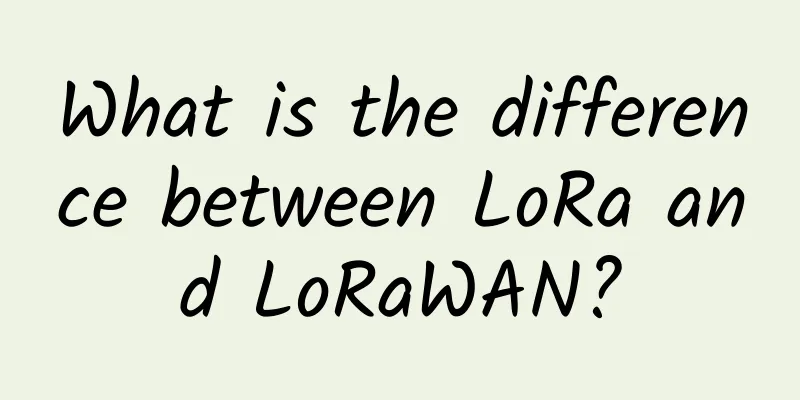What is the difference between LoRa and LoRaWAN?

|
LoRa, or Long Range, is a proprietary low-power, long-range wireless technology that uses unlicensed wireless spectrum – just like Wi-Fi uses the unlicensed 2.4 GHz and 5 GHz bands. The exact frequency band used by LoRa depends on the physical location of the deployment. For example, LoRa uses the 915 MHz band in North America and the 868 MHz band in Europe. Therefore, it is important to know which frequencies are legally available for use in each LoRa deployment location. From a range perspective, LoRa can communicate up to 10 km in optimal line-of-sight conditions. LoRa technology is owned by semiconductor supplier Semtech. While LoRa has been around for a while, LoRa chipsets have only improved in recent years to reduce power usage. These advances make LoRa ideal for IoT devices, which are widely distributed and battery-powered but only send small amounts of data at speeds of up to 27 Kbps. Examples of common LoRa deployments include asset tracking, smart meters, inspection equipment, smart parking, and agricultural field monitoring. From a networking perspective, LoRa creates a physical layer method for wireless transmission, such as a transceiver chip. This means it lacks a proper network protocol to manage traffic for data collection and endpoint device management. This is where Long Range WAN, or LoRaWAN, comes in. LoRaWAN is an open, cloud-based protocol - designed and maintained by the LoRa Alliance - that enables devices to communicate wirelessly with LoRa. Essentially, LoRaWAN takes the LoRa wireless technology and adds a networking component to it, while also integrating node authentication and data encryption for security. From an enterprise IT deployment perspective, LoRaWAN networks are ideal for IoT devices that continuously monitor the status of something and then trigger an alert back to the gateway when the monitored data exceeds a specified threshold. These types of IoT devices require little bandwidth and can run on battery power for months or even years. Difference between LoRa and LoRaWAN Both LoRa and LoRaWAN are primarily used for IoT devices, but each has its niche features and applications. LoRa technology provides a way to use unlicensed wireless spectrum, but it lacks the network capabilities needed for management. LoRaWAN is a protocol built on top of LoRa and creates a network layer. |
<<: China Mobile Xiongyan Consulting Insights: 5G URLLC Key Technology Research Report
>>: Why does the TCP protocol have a sticky packet problem?
Recommend
Will 4G be eliminated in the 5G era? Will 4G phones suddenly "lose network" like 2G?
my country's 5G has been officially commercia...
Just remember one number and you can quickly calculate the available range of the IP segment.
As long as you remember a simple number, you can ...
Wi-Fi 7 is here! Ruijie adheres to scenario-based innovation and steps up efforts in the new wireless network era
Wi-Fi is ubiquitous in today's world, and its...
If 4G construction is "building roads", 5G is actually "building cities"...
"Now that I'm using 5G, I don't thin...
Launchvps: $39.4/year KVM-4GB/80GB/3TB/Philadelphia
Launchvps is a foreign VPS service provider estab...
Resize the file system in Linux: resize2fs
resize2fs is a command used to expand or shrink t...
spinservers San Jose China Telecom network independent server simple test
A few days ago, the tribe shared the test informa...
SoftShellWeb: 30% off VPS in Taiwan/Netherlands/San Jose, 1Gbps unlimited traffic from $3.5/month
SoftShellWeb has launched a promotion for all VPS...
Home broadband can also be wirelessly accessed. What are the benefits for IoT?
People are looking forward to a lower-priced broa...
Under the SDN wave, where will traditional routing technology go?
introduction "All martial arts come from Sha...
After the failure of Germany's Industry 4.0, can China successfully achieve industrial networking with 5G?
Key points: After Germany proposed Industry 4.0 i...
Chen Peizhen, General Manager of DYXnet, the first-line: Analyzing the innovative architecture and development strategy of "AI + Cloud Network Security" service
On November 16, 2024, a grand event focusing on c...
Why are there so many different communication protocols in industrial sites?
This is a big question, so I will briefly talk ab...
UDP, you need to feed the mouse!
[[353775]] The transport layer is located between...
5G brings three values to promote intelligent mining
At present, under the long-term goal of carbon ne...









